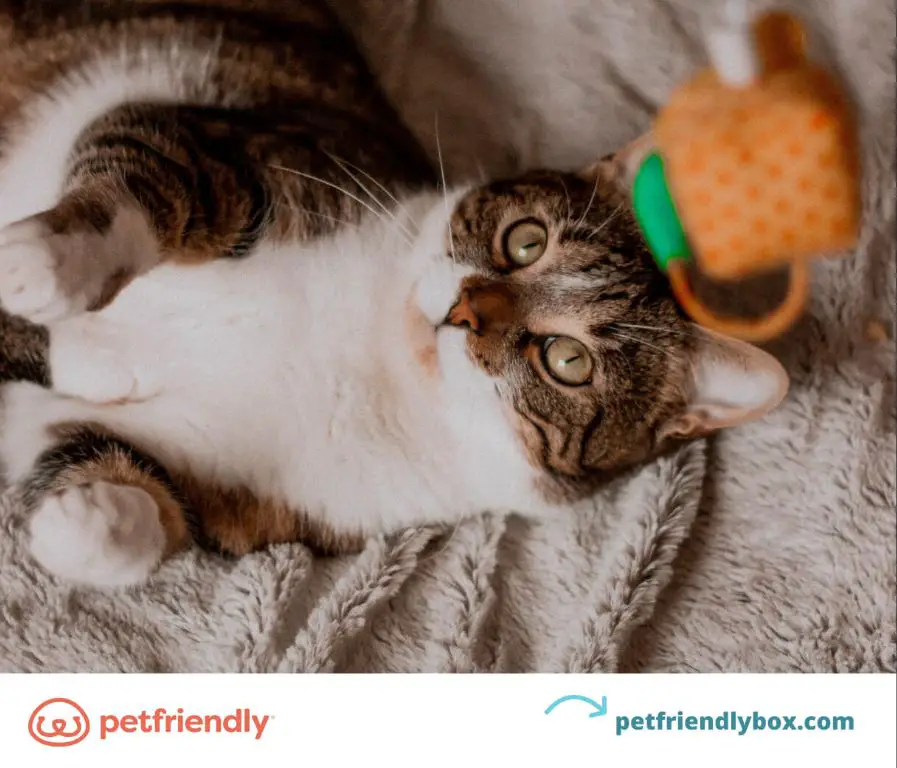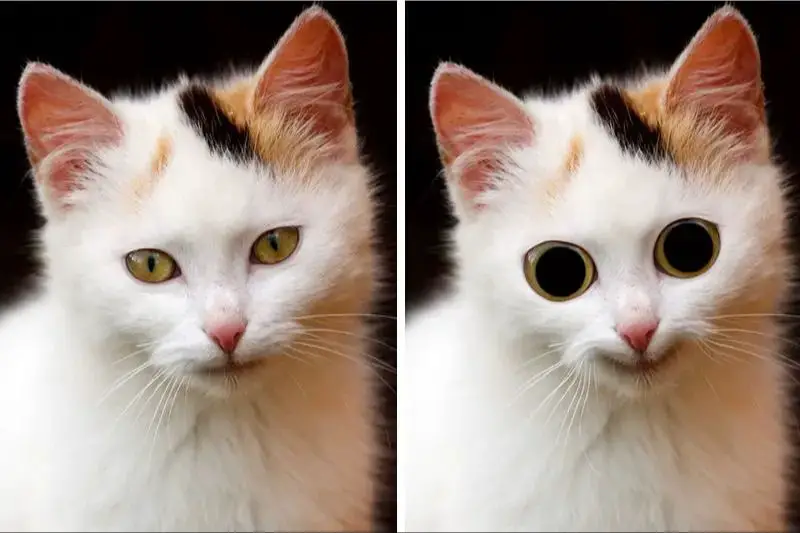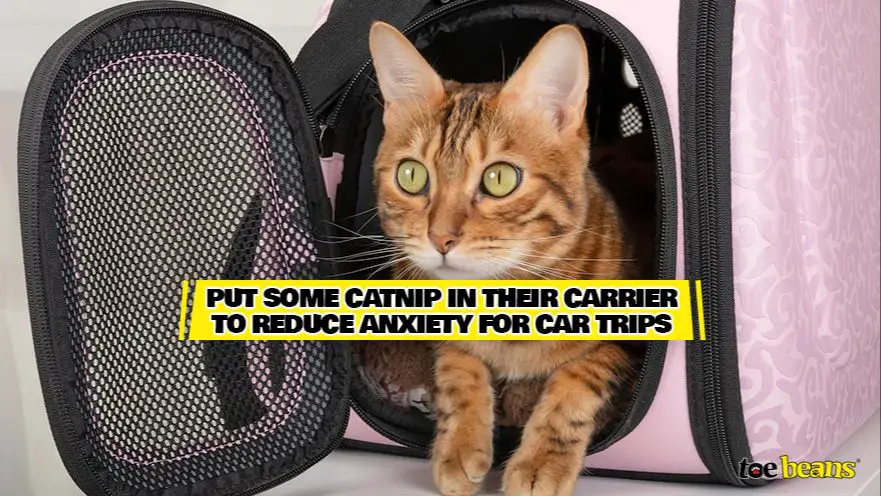What is Catnip and How Does it Affect Cats?
Catnip, scientifically known as Nepeta cataria, is a plant from the mint family that contains an aromatic oil called nepetalactone. This oil is what gives catnip its intoxicating effects on cats.
When cats smell or eat catnip, the nepetalactone binds to receptors in their brain and triggers a euphoric response. Most cats will react by rolling, flipping, rubbing, and playfully chasing imaginary objects. They may meow, purr, or growl at the same time.
Researchers believe this reaction is likely an evolutionary trait related to feline mating behaviors. The catnip high mimics feelings cats have when marking territory and being on the prowl for mates.
While not all cats react to catnip, around 50-70% of cats inherit the genes to be susceptible to catnip’s effects.
Do Cats Get ‘High’ from Catnip Like Humans Feel with Recreational Drugs?
There are some similarities between how cats react to catnip and the euphoric feelings humans experience with recreational drugs. When cats smell or ingest catnip, it binds to receptors in their brain and triggers a temporary euphoric state. They may become hyperactive, roll around, rub their face on the catnip, and appear to be in an altered state of consciousness. This high typically lasts 5-15 minutes before wearing off.
However, there are also important differences. Catnip is not addictive for cats – they do not crave more after coming down from the high, and repeated exposure does not produce a stronger effect. Cats also do not suffer any negative aftereffects like humans can with drug use. Most importantly, catnip produces no harmful side effects in cats when used properly, unlike many addictive recreational drugs that carry health risks for humans.
While the catnip reaction produces a temporary euphoria, it is driven by instincts rather than addiction. The chemical in catnip mimics feline pheromones and elicits an innate response in cats that is not harmful when moderated. So in summary, cats may get “high” from catnip but they do not become dependent on it like humans dependent on addictive, recreational drugs.

Sources:
https://www.usatoday.com/story/news/2022/07/05/what-does-catnip-do-cats/7790124001/
https://pethelpful.com/cats/Is-Catnip-Addictive-Why-Some-Cats-Cant-Get-Enough
What Happens After the ‘High’ Wears Off?
The euphoric effects of catnip typically last between 5-15 minutes before wearing off, according to pet experts. Once the catnip high subsides, most cats will return to their normal demeanor and behavior.
While under the influence of catnip, cats may exhibit excitable, playful, and frenzied behaviors like rolling around, leaping, and pouncing. However, after these peak effects wear off, cats usually become more relaxed and mellow out (Source: https://www.petmd.com/cat/general-health/what-is-catnip).
It’s a misconception that cats experience an unpleasant “hangover” period after the catnip wears off. There is no evidence that cats undergo negative after-effects similar to a hangover in humans. Once the catnip effects stop, cats simply return to their typical temperament without any lasting side effects or grogginess (Source: https://www.beverlyhillsvets.com/blog/effects-of-catnip/).
While most cats quickly return to normal, a small percentage of cats may become mildly aggressive or restless for a brief period after the catnip euphoria wears off. However, aggressive behavior is very rare and temporary. Most cats exhibit no signs of irritability or discomfort after enjoying catnip (Source: https://www.smalldoorvet.com/learning-center/medical/catnip/).
Why Do Some Cats React Differently to Catnip?
According to the article on PetMD
{% url ‘https://www.petmd.com/news/view/why-do-some-cats-not-react-catnip-37525’ %}
between 50-70% of cats show a positive response to catnip. So why do some cats not react at all?
The reason lies in genetics – a cat’s response to catnip is an inherited trait. Cats either respond positively to catnip, or they don’t, based on their genetic profile.
As explained in the Scientific American article
{% url ‘https://www.scientificamerican.com/article/experts-how-does-catnip-work-on-cats/’ %}
, around 70-80% of cats carry the genes that allow them to experience catnip’s effects. For the 30-50% that don’t carry these genes, catnip simply has no effect.
So in summary, a cat’s genetic inheritance determines whether they will react to catnip or not. Those with the right genes get the euphoric experience of rolling, rubbing, and playing after exposure to catnip. Those without the genes won’t exhibit these excited behaviors.
Are There Risks or Downsides to Giving Catnip?

For the most part, catnip is considered safe for cats when given in moderation. According to the ASPCA, there is no evidence that catnip is harmful to cats, even young kittens, when used appropriately.[1]
However, there are some potential downsides to be aware of when giving catnip to your cat:
- Overstimulation – Too much catnip can overstimulate some cats, making them overly hyper and even aggressive. Keep playtime sessions with catnip short (5-10 minutes).
- Gastrointestinal upset – Eating too much catnip may cause vomiting or diarrhea. Use dried or fresh catnip sparingly.
- Lethargy – Some cats may experience fatigue or sleepiness after the euphoric effects of catnip wear off. Let your cat rest after playtime.
- Loss of effectiveness – Using catnip too frequently can cause cats to become desensitized to its effects.
Catnip is not recommended for cats that are prone to aggressive behavior since it can exacerbate those tendencies. Pregnant cats should also avoid catnip until after giving birth and nursing their kittens.
Overall, catnip is safe when given occasionally and in small amounts. Monitor your cat for signs of overstimulation and discontinue use if any negative reactions occur.
Proper Dosage and Methods for Giving Catnip
When it comes to catnip dosage, moderation is key. Too much catnip can cause lethargy, while giving it too frequently reduces the novelty and impact.
For dried catnip, start with just a pinch or teaspoon as a test dose to gauge your cat’s reaction. 1-2 teaspoons is often enough for a single play session. For fresh catnip, use 2-3 leaves or a sprig about the size of your thumb. You can rub the leaves to release more aroma before giving them to your cat.
Catnip can be given loose, stuffed in toys, sprinkled on scratchers, or infused into treats. Just make sure not to overwhelm your cat. Rotate different toys to keep things interesting. Allow at least 15 minutes between sessions for the catnip to wear off.
Some key tips:
- Use less catnip for kittens under 6 months old
- Store unused catnip in an airtight container out of sunlight
- Replace toys after the catnip aroma fades
- Watch for signs of overstimulation like aggression or vomiting
- Avoid getting catnip in your cat’s eyes
Giving catnip properly and safely enhances enjoyment for both you and your cat. Monitor reactions and adjust the amount as needed. Catnip is generally harmless when used responsibly.
Behavior Changes to Expect When Using Catnip
When cats eat or smell catnip, they typically experience behavioral changes and signs of excitement. The most common behaviors displayed when a cat reacts to catnip include:
- Increased playing, running, jumping, and vocalizing
- Chin and cheek rubbing on objects
- Rolling around and flipping their body
- Drooling or foaming at the mouth
According to Cat Behavior Associates [1], the catnip reaction involves sniffing, licking, head shaking, and eating the catnip. Cats may show signs of euphoria such as rolling around, flipping, and general excitement. These behavior changes tend to last 5-15 minutes before the cat returns to normal.
The typical catnip response showcases a cat’s playful side. Increased play, running, jumping, and vocalizations are all common behaviors. Owners will want to provide ample toys and activities for the cat during this energized state.
Other Uses for Catnip Beyond Recreational Play
While catnip is often associated with playtime and stimulating energetic activity in cats, it can also have a soothing, calming effect. The chemical compound nepetalactone in catnip triggers the olfactory nerves, but some cats may react by becoming more relaxed and docile. For these cats, catnip can be a helpful substance for calming anxiety and stress.
Cat owners can use catnip to help relax their cat in stressful situations like veterinarian visits, travel in the car, or grooming sessions. Simply sprinkling a small pinch of dried catnip in their carrier or on their toys can help take the edge off and make the experience less frightening. The relaxing properties of catnip may help some cats adjust to new environments like shelters or boarding facilities as well.

Catnip can also be used as a training aid and bonding tool between cats and their owners. Rubbing a bit of catnip on toys or hands when playing and interacting can help reinforce positive associations. Over time, the catnip scent becomes a cue that signals a rewarding, enjoyable activity is about to happen. Some cats become more affectionate after exposure to catnip, so owners can use it to help facilitate positive interactions.
Compared to synthetic pheromones or medications, catnip provides a natural alternative for relaxation and anxiety relief. It typically causes little to no side effects in cats when used responsibly. Checking with a veterinarian is still recommended before introducing catnip to a cat’s routine.
Catnip Alternatives and Additional Interactive Toys
For cats who don’t respond to catnip, there are some safe alternatives that can provide a similar appeal to cats’ senses. These include:
- Silver vine – Silver vine contains actinidine, which affects cats similarly to nepetalactone in catnip. See more on Amazon.
- Valerian – Valerian root can be an alternative for cats who don’t react to catnip. See more on Meowy Janes.
- Tatarian honeysuckle – The wood of this plant contains chemicals that can appeal to some cats. See more on The Dodo.
In addition to herbal alternatives, providing cats with enriching toys can engage their senses and provide mental stimulation. Some examples include:
- Puzzle feeders
- Interactive wands and teasers
- Scratching posts and scratch pads
- Tunnels and hideaways
Offering a variety of herbs and toys can provide cats with options to stay happily engaged in play and exploration.
Key Takeaways on Catnip and Cats Feeling ‘Hungover’
To recap, while catnip produces a temporary “high” in cats, there is no evidence that it causes a hangover effect like humans feel after the use of recreational drugs. The catnip high wears off within 10-15 minutes without any noticeable after-effects or withdrawal symptoms (https://www.smalldoorvet.com/learning-center/medical/catnip/).

The key points covered in this article are:
- Catnip contains an oil called nepetalactone that binds to olfactory receptors in cats, causing a euphoric but harmless high.
- Not all cats react to catnip, especially kittens younger than 6 months.
- While catnip is non-addictive, cats can get mildly ill from eating too much catnip at once.
- The catnip reaction usually lasts 10-15 minutes before fading away without after-effects.
- Alternatives like silver vine and catnip toys can provide a similar stimulating effect.
In summary, catnip is a safe way to provide sensory enrichment to cats when used responsibly. It does not produce negative after-effects like human hangovers. Monitor your cat’s reaction to avoid overindulgence. Overall, catnip causes delight more than despair for felines.

